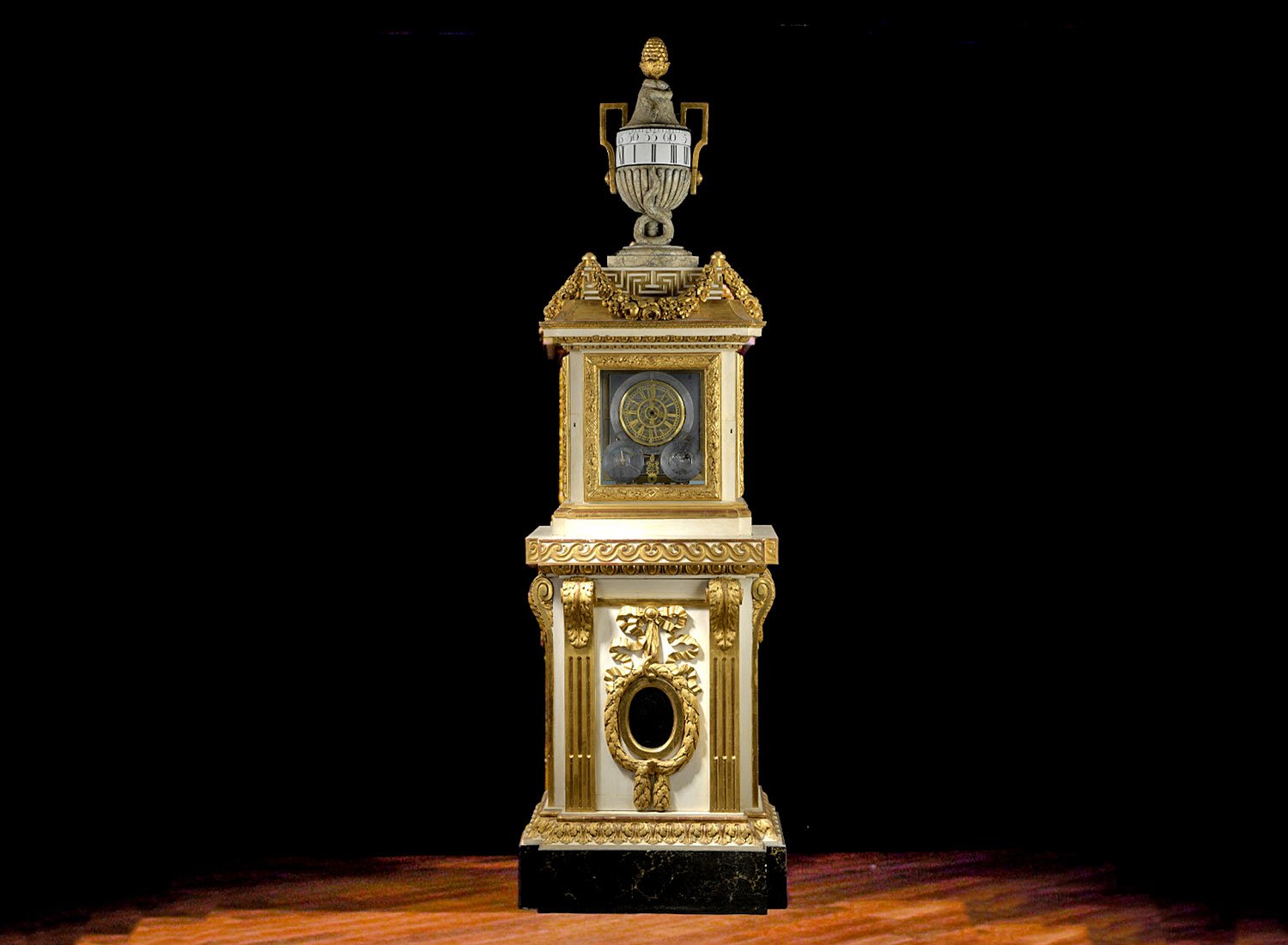
An 18th-century Neoclassical clock standing ten feet tall, made by a clockmaker to the French king, may fetch as much as $850,000 at a Paris auction on June 30.
“It’s a once-in-a-lifetime occasion,” clock expert Anthony Hunter told Artnet News by phone. Turner is an independent consultant in watchmaking research and heritage.
Nothing else like it has ever come to auction, said auctioneer De Baecque and Associates—apart from the clock itself, which Turner said fetched approximately 500,000 Swiss francs (about $758,000 in today’s currency) when it was last offered in a public sale in 1990 at Geneva’s Hapsburg Antiquorum. The new sale will take place at Paris’s Hôtel Drouot, where it will be on display from June 28–30.
A monumental astronomical clock, by Jean Louis Bouchet. Courtesy De Baecque and Associates.
The clock features a wood case, topped with a decorative urn, and stands on a faux marble base. The cabinet is stamped by its maker, Jean Baptiste Guillaume Prévost. The clock includes what is called a skeletonized movement, meaning that the mechanism’s inner workings are exposed in a glass cage with a mirrored backing—very rare for the 1770s, Turner pointed out. The 17th and 18th centuries were a high point in the development of mechanical clocks, enabled by technological innovation, especially those by Dutch mathematician and physicist Christian Huygens, said Turner.
“Why is it so special?” Turner rhetorically asked. “It’s a monumental astronomical clock with all the complications you could hope for. Not only does it tell you sunset and sunrise, where the sun is in the zodiac, and the phases of the moon, but also solar time and mean time. In other words, it has two different time indications. One is the time shown by the sun, which you would see on a sundial. That is the time shown on the glass dial on the front of the clock. Above, on a set of turning rings on an urn, it tells mean time, that is, the time indicated by a well-regulated clock. There’s a difference, which varies throughout the year.”
A monumental astronomical clock, by Jean Louis Bouchet. Courtesy of De Baecque and Associates.
One of the winners of the 2021 Gaïa Prize from the Federation of the Swiss Watch Industry, Turner is a co-author of the 2022 book A General History of Horology (Oxford University Press).
The clock was made for collector Michel II Velut de La Crosnière in about 1770 by Jean Louis Bouchet, who became a master clockmaker in 1762 and was appointed clockmaker to King Louis XV for the Chateaux de Bellevue in 1769. Bouchet clocks reside in the Hermitage Museum in St. Petersburg and the National Archives in Paris.
“This clock is unusual,” Turner explained. “Already in the Middle Ages, you had a long tradition of monumental clocks, mainly set up in cathedrals or churches or town halls or other public places. This seems to be a slight scaling down, a domesticating of these clocks for an elegant, rich interior.
A monumental astronomical clock, by Jean Louis Bouchet. Courtesy of De Baecque and Associates.
“The case is extremely modern,” he added. “In the 1770s, it was just the moment when a fashion developed for sculpting wooden images and figures and columns which could be fixed onto a white wood ground and then gilt, and on this clock you see exactly that. It was at the forefront of fashion.”
Along with all the complications, the clock is marked with the names of some 49 locales that were used as observation stations during the passage of Venus in front of the sun in 1761 and 1769, a turning point in the history of astronomy, which allowed astronomers to accurately measure the size of the solar system.
If all that is not enough for the discerning clock collector, there’s also the fact that it still works.
More Trending Stories:
The Art Angle Podcast: James Murdoch on His Vision for Art Basel and the Future of Culture
A Sculpture Depicting King Tut as a Black Man Is Sparking International Outrage